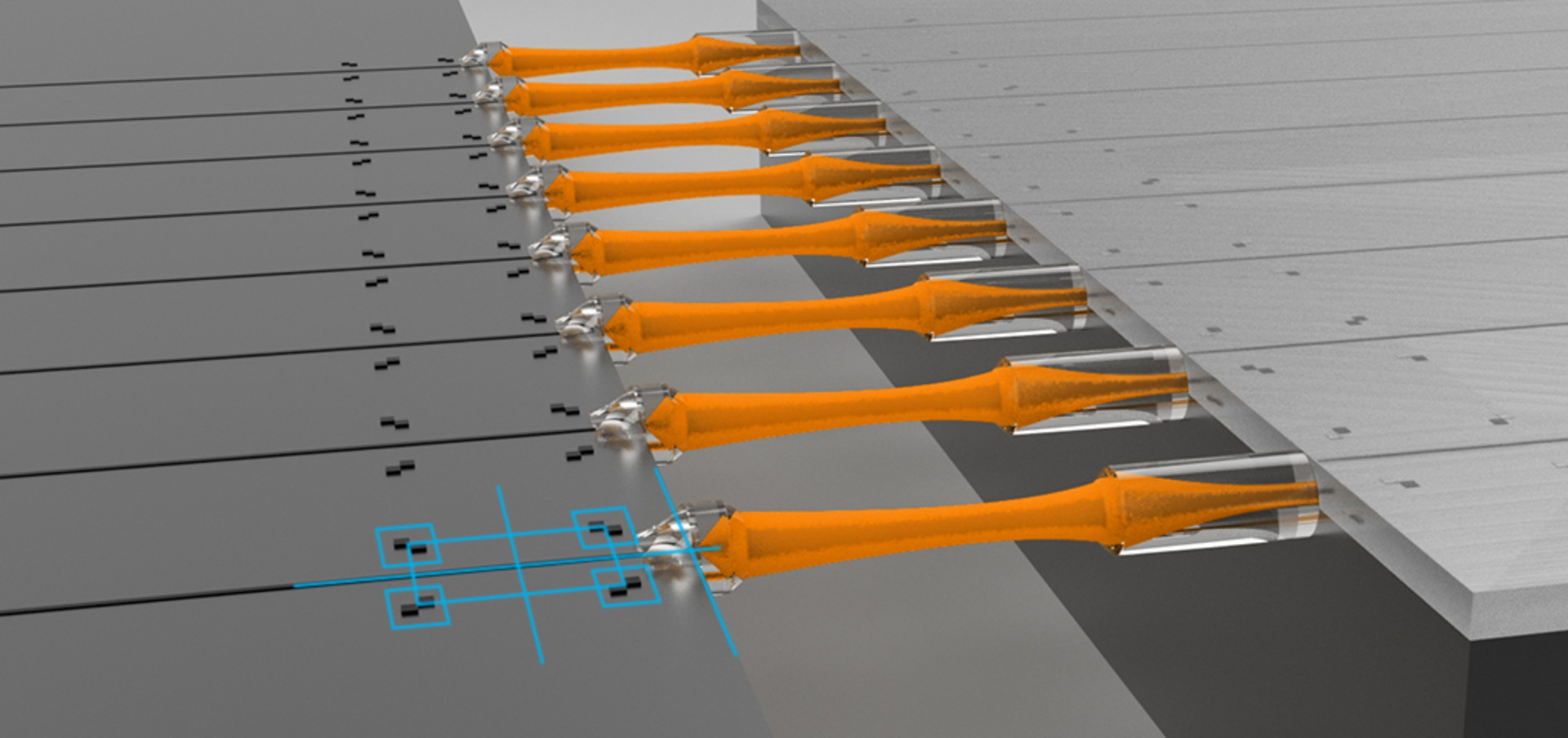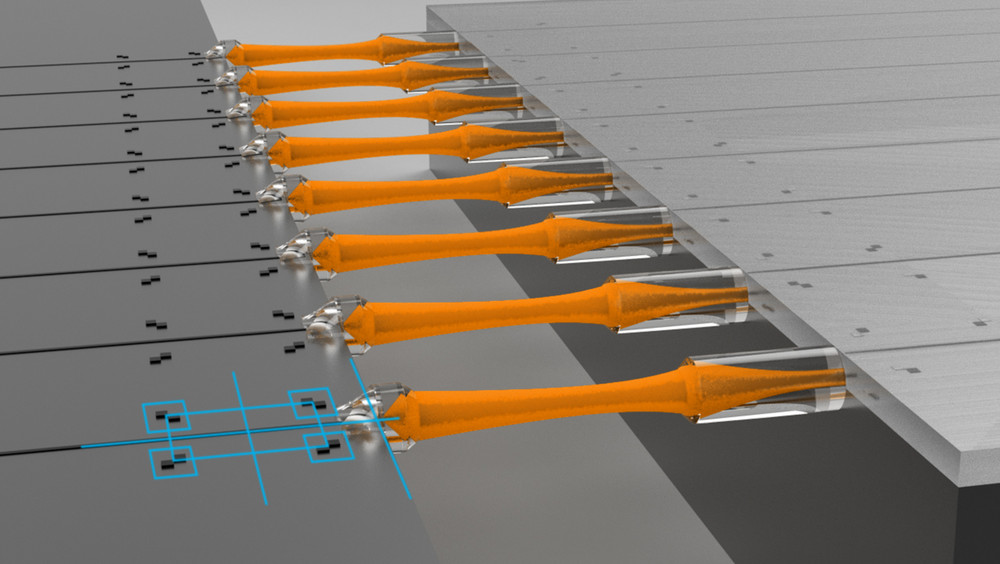Nanoscribe will deploy the maskless lithography system Quantum X as its hardware framework and is collaborating to establish an advanced platform as the industry standard for next-generation photonic packaging.
Multidisciplinary EU-funded project
PHOENICS brings together 9 leading research institutes and companies. The 4-year project is a joint research effort of the coordinating University of Münster (Germany) in collaboration with University of Exeter (UK), École polytechnique fédérale de Lausanne (EPFL, Switzerland), Nanoscribe (Germany), University of Oxford (UK), Heinrich Hertz Institute of the Fraunhofer Gesellschaft (HHI, Germany), Ghent University (Belgium), IBM Research GmbH (Switzerland) and MicroR Systems (Switzerland).
The project has been awarded a grant of EUR 5.8 million from Horizon 2020, the EU program for research and innovation. Over the 4-year funding period, the consortium plans to establish photonic computing as a competitive approach for machine learning.
About Nanoscribe
The medium-sized company develops and produces 3D printers and maskless lithography systems for microfabrication as well as specially developed printing materials and application-specific solution sets. The specialist for additive manufacturing of high-precision structures and objects on the nano-, micro- and mesoscale was founded in 2007 as a spin-off of the Karlsruhe Institute of Technology (KIT). With the Carl Zeiss AG (ZEISS), Nanoscribe has a strong partner and investor at its side. Today, with more than 70 employees and subsidiaries in China and the USA, Nanoscribe has become the market and technology leader. More than 2,000 users and operators at top universities and innovative industrial companies worldwide benefit from the groundbreaking technology and application tailored solutions for 3D Microfabrication.
Caption
Img. 1: Visualization of chip-to-chip coupling for photonic packaging with automated alignment. Image: T. Hoose, Nanoscribe
Right of use and media relations
Our image may be used free of charge for editorial purposes. Please state the source as follows: "Image: Nanoscribe, www.nanoscribe.com". The image must not be used for commercial purposes or passed on to third parties.
In case of questions or if you would like to be added to our press mailing list, please do not hesitate to contact Dr. Alena Kirchenbauer, media@nanoscribe.com.
Stay up to date with our latest press releases about Nanoscribe and the world of 3D Microfabrication. Directly get in touch with us to discuss further press activities: Media relations



